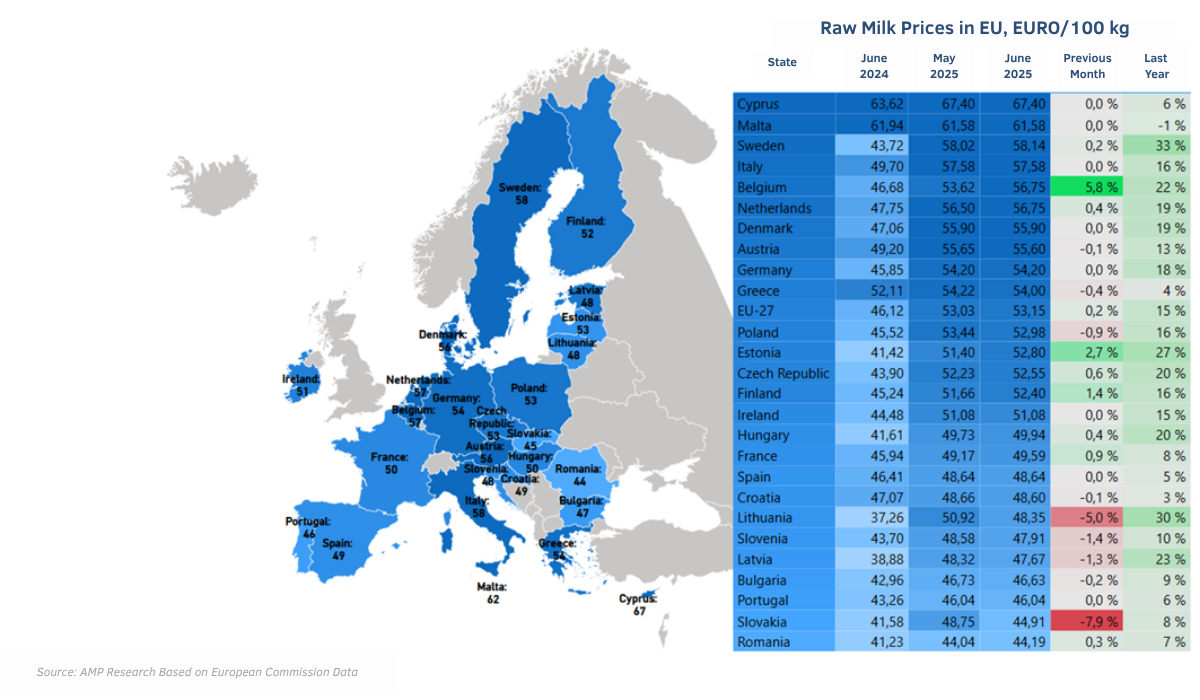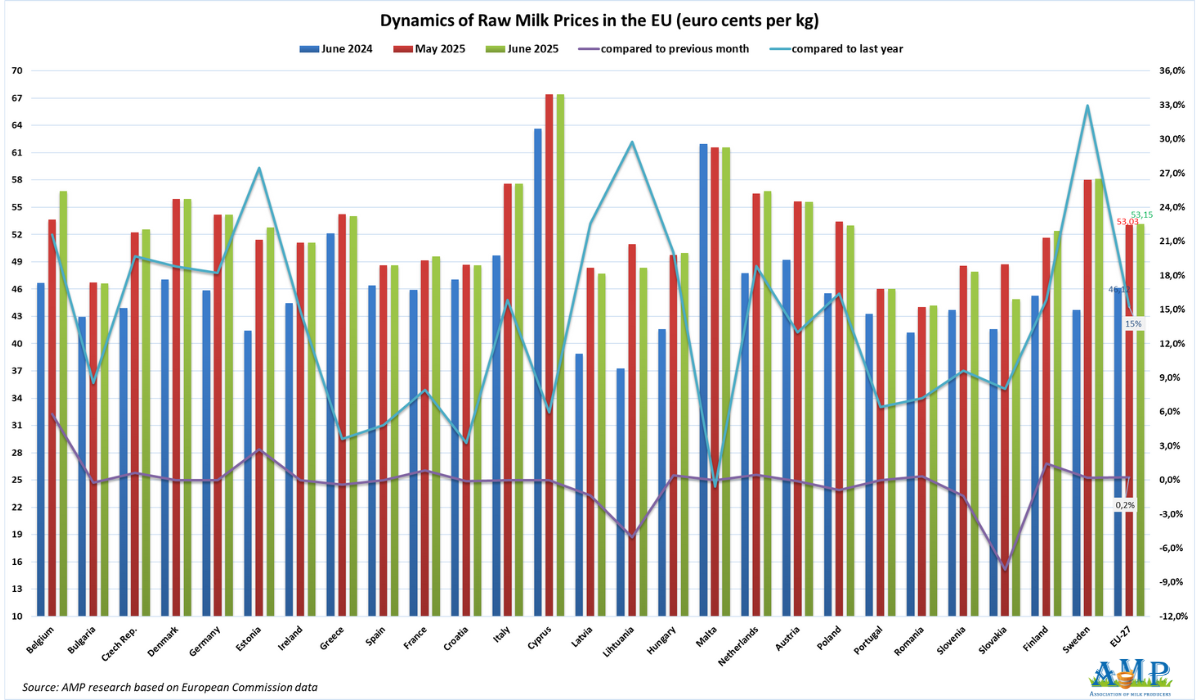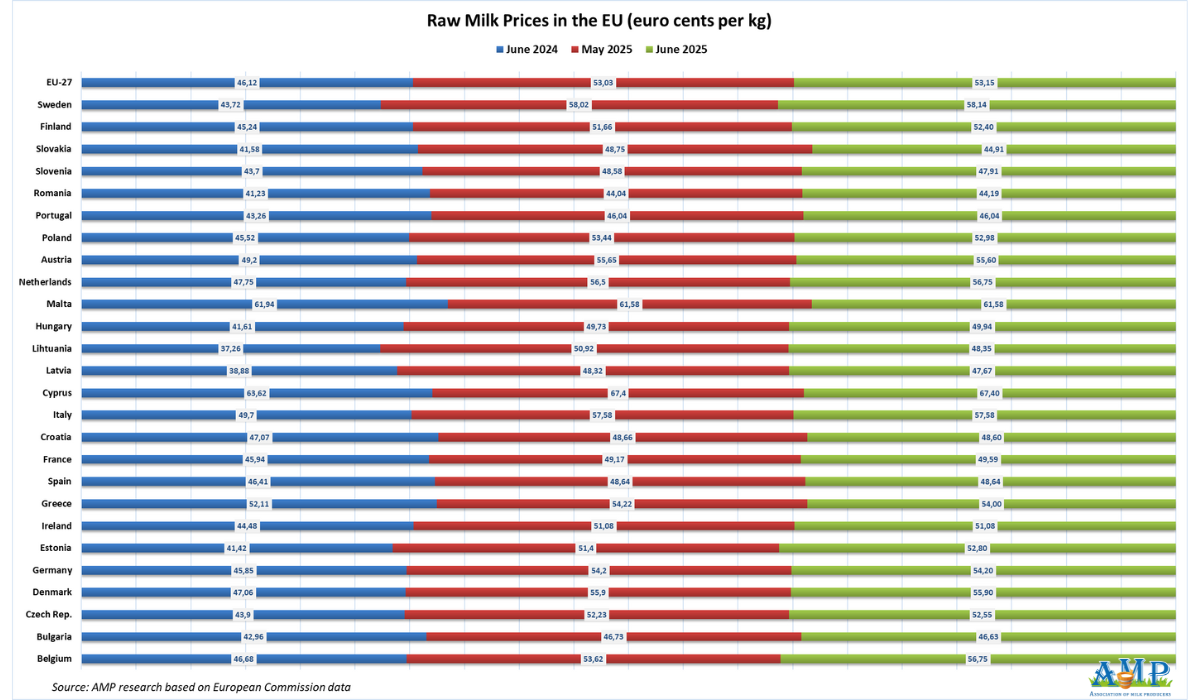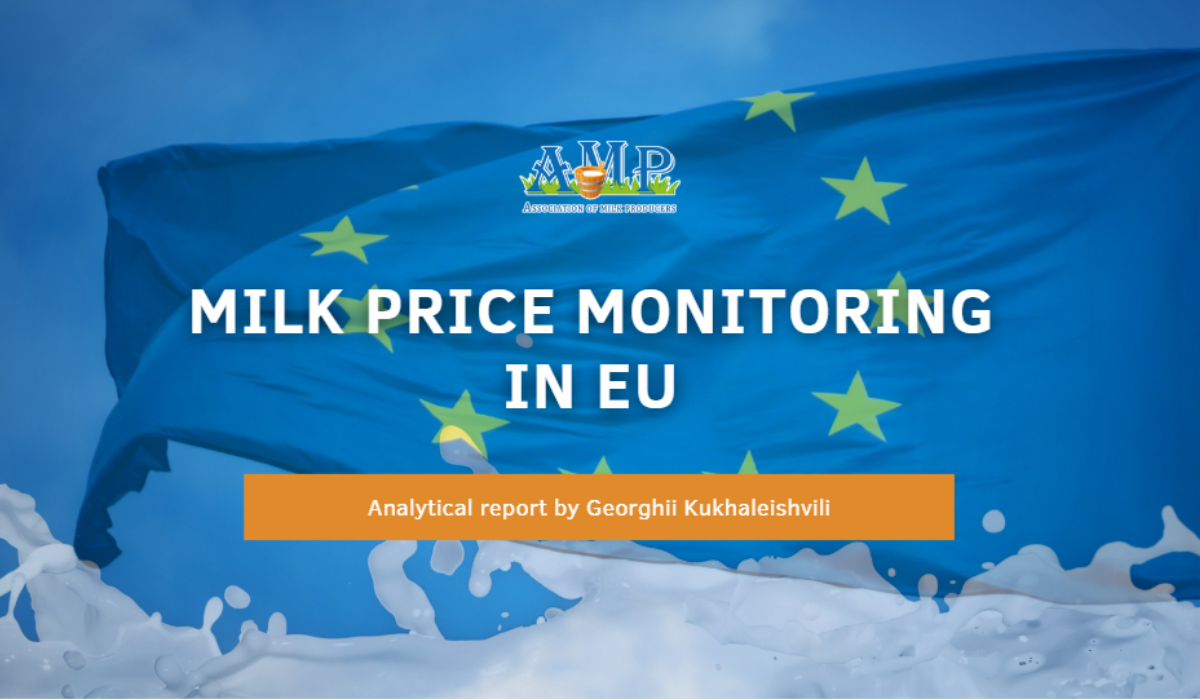A reduction in cattle herds due to bluetongue disease and drought are restraining milk yields and contributing to rising raw milk prices in Europe, reports Georghii Kukhaleishvili, an analyst at the Association of Milk Producers.
According to preliminary data from the European Commission, in June 2025, the average raw milk price in the EU was 53.15 euro cents per kg, which is 0.2% more than in May 2025. Compared to June 2024, milk in the EU has become 15% more expensive. In June, the price of extra grade milk in Ukraine was 37.82 euro cents per kg.

⇒ Compared to May, the price of raw milk increased in 9 EU member states. Among large producers and exporters of dairy products, raw material prices increased in France to 49.59 euro cents per kg (+0.9%) and in the Netherlands to 56.75 euro cents per kg (+0.4%) relative to May 2025. Milk prices rose most significantly in Belgium to 56.75 euro cents per kg (+5.8%) and in Estonia to 52.80 euro cents per kg (+2.7%).
⇒ In June, purchase prices remained unchanged in Germany, Denmark, Ireland, Spain, Italy, Portugal, Cyprus, and Malta compared to May of the current year.
⇒ Over the last month, raw milk prices decreased in 9 countries. The largest price reductions were observed in Slovakia to 44.91 euro cents per kg (-7.9%) and Lithuania to 48.35 euro cents per kg (-5%).
⇒ The most expensive raw milk is in Cyprus (67.40 euro cents per kg) and Malta (61.58 euro cents per kg). The lowest prices for milk are received by farmers in Romania (44.19 euro cents per kg) and Slovakia (44.91 euro cents per kg).
Compared to June 2024, raw milk prices increased in 25 European countries. Relative to last year, milk became most expensive in Sweden (+33%) and Lithuania (+29.8%). The price decreased only in Malta (-0.6%) compared to last year.
Georghii Kukhaleishvili suggests that the ongoing reduction in raw milk production in the EU is contributing to higher raw milk prices. According to USDA, mainland Europe was affected by the spread of the bluetongue virus, which impacted milk production limitations in spring. This led to a shortage of some key dairy products, particularly butter, which is supporting high prices. Although the bluetongue outbreak has passed, the reduction in cow herds continues. According to GIRA, the cattle population in the EU has decreased by 2.6%. Excessively dry weather is hindering the recovery of raw milk production. It is likely that milk production in Ireland may halt if the country loses its right to use nitrates in feed production. Increased production costs could force Irish farmers to reduce their livestock by 18%.


Press Service of the Association of Milk Producers
Follow us on Facebook
Related News


